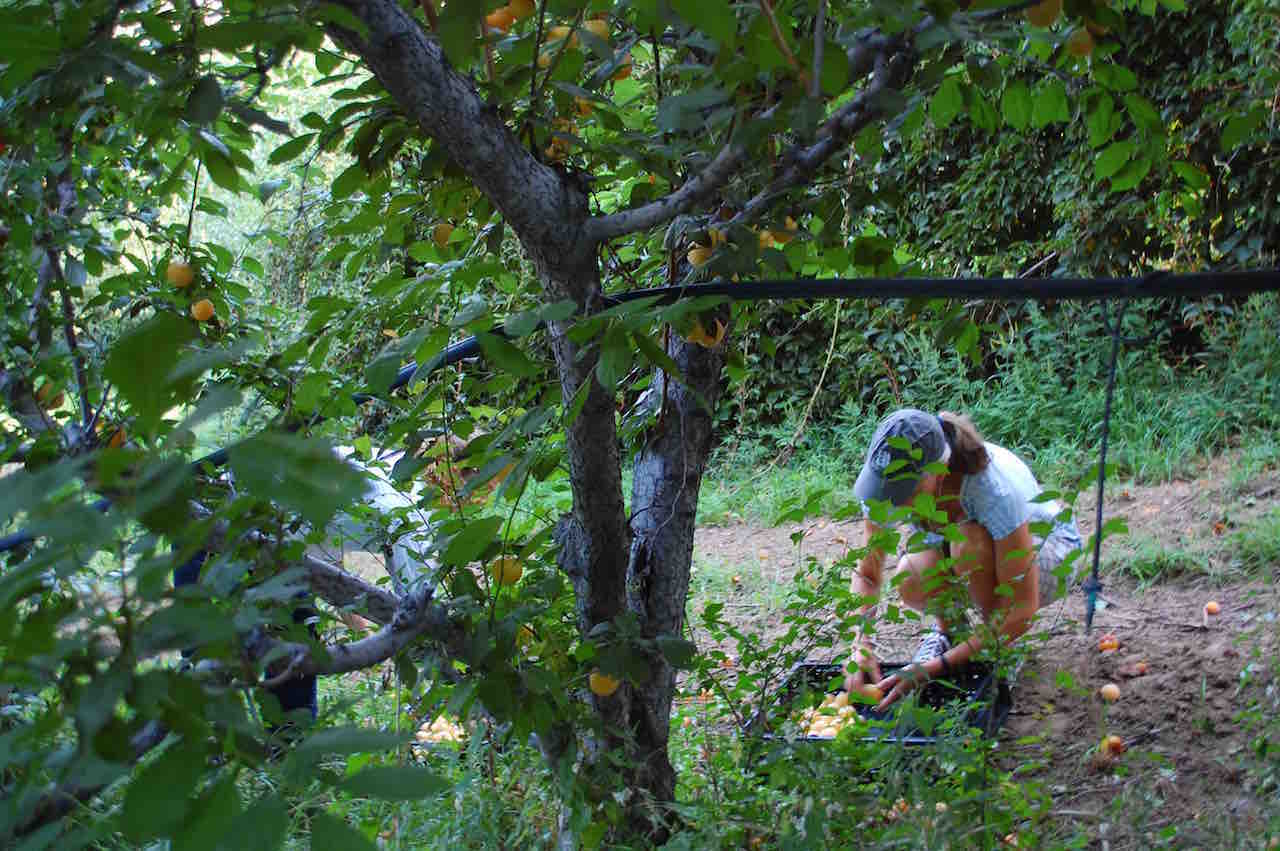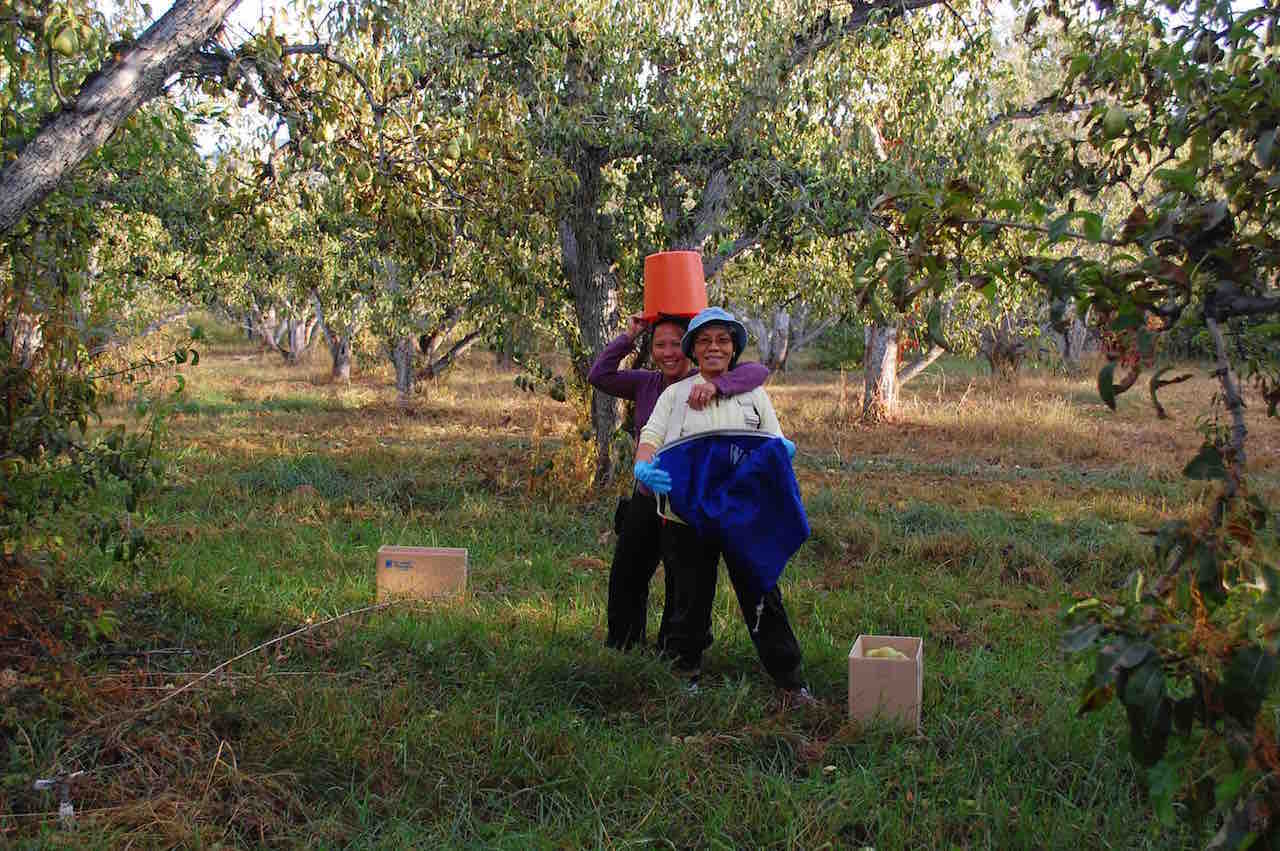 When coordinating gleaning efforts in fruit growing areas, paying particular attention to orchardists as potential donors will likely provide a continual source of gleaning opportunities. While gleaning in orchards can result in an impressive increase in fresh fruit available in your regional emergency food system, orchard gleaning brings unique challenges that must be accommodated in order to make the most of your orchardist donors.
When coordinating gleaning efforts in fruit growing areas, paying particular attention to orchardists as potential donors will likely provide a continual source of gleaning opportunities. While gleaning in orchards can result in an impressive increase in fresh fruit available in your regional emergency food system, orchard gleaning brings unique challenges that must be accommodated in order to make the most of your orchardist donors.
Of first importance when approaching or working with orchardists is maintaining or developing a working understanding of their profession. Not least among this understanding is mastering a general knowledge of crop seasonality. For maximize efficacy, Gleaning Coordinators should try to get in touch with orchardist contacts when their trees are nearing the end of their harvest season. If you contact orchardists too early in the season, they may have an unclear understanding of potential gleaning opportunities. If you contact orchardists in the midst of harvest, they will not have the time to speak with you.
Creating a Seasonality Chart for your region, or even your specific donors, is a valuable way to improve the timing of gleaning solicitations. A series of charts for the Wenatchee area were compiled from years of purchasing information from farms and orchards working with Community Farm Connection.
However, even if you do not have access to previous years’ specific harvest information, research into your area’s hardiness zone, crop makeup, and regional planting schedules will give you enough information to have a general estimate of seasonality. As years pass, the Seasonality Chart can be updated to reflect the results of your gleaning efforts. Though these Seasonality Charts are broken down only by crop species, if your region has enough orchardists it may be valuable to further chart seasonality with reference to the ripening time of different varieties of the same type of fruit, which can vary by months.
For instance, Gala apples can be harvested up to two months before Fuji apples. Orchard elevation and sun exposure differences can also create large variability even within a small geographic area as well. Even once you have developed a seasonality chart, gleaners must remain aware of yearly fluctuations of harvest situations based on weather patterns. If the weather has been particularly good or particularly bad, harvest may happen significantly before or after the usual period.
Keeping the year’s weather in mind benefits gleaners relationships with orchardists in ways other than soliciting gleans. Knowledge of the year’s weather in relation to growing seasons can alert gleaners to potential blemish situations ideal for gleaning. For example, hail early in the apple season can create marks on apples, rendering them unsalable, but still extremely edible and eligible for gleaning.
In the 2013 season, Wenatchee experienced an unseasonably wet spring, bursting the cherries, rendering much of the harvest completely unmarketable. As a result, the area’s Community Harvest Gleaning Program experienced a multitude of offers of cherry gleans, as had not been experienced the previous season. Similar situations will likely happen every year, though likely with different crops and different causes. Remaining aware of weather conditions favorable and unfavorable to orchardists’ particular crops will, once again, help gleaners better target their donation solicitations.

Finally, demonstrating knowledge of general orchard topics such as harvesting methods, packing house relationships, and orchard etiquette will significantly increase your credibility with orchardists donors. If you do not have firsthand experience in the orchards, Extension agency websites frequently have fruit tree information and YouTube videos can give background for ladder safety, picking techniques, and transportation/storage methods.
Additionally, information can be gleaned from talking with former donors or other community contacts by asking questions about how orchards work. If orchardists feel confident that you have knowledge of how to harvest fruit without damaging the future viability of trees and how to behave on their property without threatening any of their various certifications, then they will be more willing to allow gleaners on their property and to continue to work with your program in the future.

